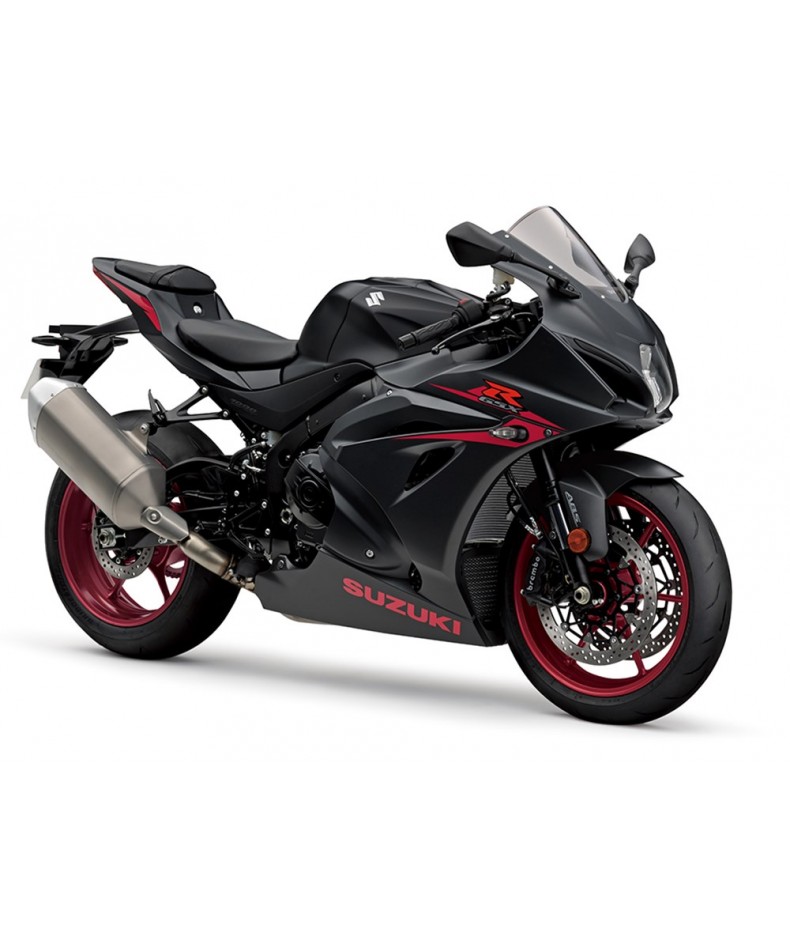Suzuki Gsk-R1000R and GSX-R100

The new GSX-R has been built with an almost cunning dedication to simplicity – a level of reductive thinking that makes it lighter, more mechanically simplistic, reliable and robust, while taking nothing away from the sorts of electrickery that we’ve come to expect.
A whole 12 months ago Suzuki unveiled a ‘concept’ GSX-R1000R that looked as finished as any production bike. But it wasn’t finished. Which is lucky, really – because the new GSX-R1000R needs to be top dog, it needs to recapture the sublime, simple genius of the K5 model, it needs to be what Suzuki have dubbed it: The King of Sportsbikes. Based on the limited information available, the bike Suzuki revealed a year ago looked unlikely to reach that goal. But a year down the line, there’s plenty of positive signs that this properly production-ready version could get at least one hand on the crown. Possibly two. It’s a tall order, though – so what’s so special about the all-new sixth generation 2017 GSX-R1000? The most impressive part probably isn’t a single physical aspect, but more the ethos that has created the whole. Yes, it’s littered with some lovely hardware and software – but it’s important to understand some of what this bike isn’t before we catalogue what it is. The new GSX-R has been built with an almost cunning dedication to simplicity – a level of reductive thinking that makes it lighter, more mechanically simplistic, reliable and robust, while taking nothing away from the sorts of electrickery that we’ve come to expect.
2017 GSX-R1000 engine
Beyond the engine, the ethos continues. Suzuki tried semi-active electronic suspension, but their test riders couldn’t find any tangible benefit over a well-developed conventional set-up, so they’ve shunned complication for Showa’s excellent Balance Free Fork and Balance Free Cushion shock for the R, while the stocker gets the Big Piston Fork and matching shock. Hanging off each are newly designed lightweight 6-spoke rims wearing 120/70 R17 and 190/55 R17 Bridgestone RS10s (S21s for the non-R). The frame holding the two ends together is 10% (about a kilo) lighter than the old one, while the rear subframe is also a kilo lighter, too.
GSX-R1000 gets electronic
The current GSX-R1000 is one of the last bastions of intervention-devoid superbikes – but that all changes with the 2017 bike. As well as three rider modes for engine delivery, the new model gets a six-axis Inertial Measurement Unit (IMU), 10-level traction control, banking-sensitive ABS, and – on the R – launch control and a bidirectional quickshifter. These systems are the same as you’ll find on most other high-end superbikes and road bikes now, but all tuned in to the GSX-R’s character. The only oddities are that the ABS can only be disengaged with the race kit, and the quickshifter can’t be turned off either.
New style for GSX-R1000
Suzuki have worked hard in their windtunnel to make the bodywork work as best as possible, while turning interesting observations into problem solving. The tank, for example, has a lower profile to enable the rider to get over it, and behind the screen, more effectively. And while you’re tucked in over that lower tank, you’ll get a good look at the all-new all-LCD dash. It’s black on white for the stocker, and white on black for the R, and hosts what should be a bewildering array of information, but it’s actually clear and easy to interact with, and the menus are a doddle to scroll through for the myriad settings (we tried it out in Japan). There’s LED lighting all round, while the R gets a set of LED eyebrows, too. Now we just need to ride it against its peers, including the new Fireblade (P4-6), to see if really is king again. That opportunity is expected to arrive at its world launch in February next year.






Comentarios
Deje su comentario